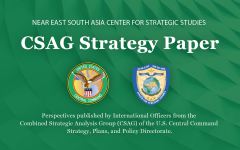ISKP Re-Emergence and New Threat?
March 11, 2022 2022-03-11 16:21ISKP Re-Emergence and New Threat?
LTC Jussi Puustinen, FIN Army, CSAG CCJ5
11 Jan 2022
Introduction:
The origins of ISKP are in the chaos and turmoil of the last decade’s situation in Afghanistan and (western fought) wars in the Middle East. ISIS/Daesh affiliate ISKP (The Islamic State Khorasan Providence, also known with acronyms ISIS-K, IS-K, ISK) was fought against and defeated down to around 2000 plus fighters, but since U.S. and coalition nations have left Afghanistan, there is a possibility for a new threat of ISKP emerging as there is space for them to grow. The Taliban has stated that it will fight ISKP1 and has done so, as they have been rivals since the advent of ISKP and they don’t share the same ideology or strategy. But their relations aren’t always that simple; for example, some ISKP fighters share families with the Taliban through marriage and vice versa. In the past, they both fought against the coalition in Afghanistan. But now that the Taliban has shifted to a political and state-like entity, ISKP has even more motivation to fight them.2 This, with the withdrawal of U.S. and coalition troops, has led to increased violence and if the Taliban is not able to provide security and other basic needs for the Afghan people and motivate its fighters, it will help ISKP recruitment. With growing ISKP comes growing threats.
Key Points:
- ISKP attacks are rising and violence in Afghanistan is increasing.
- ISKP targets mainly the Taliban but also Shiite and Afghans who worked for the US and the West.
- ISKP is still a small but growing group driven by dissatisfied Taliban and other militias.
- With growing ISKP comes growing threats not only to Afghanistan but to the broader region and the West as well.
- Whether ISKP can leverage the situation for long-term success is uncertain as Afghans are tired of war and the sentiment is against them – ISKP might not have the same momentum as it did in the previous rising.
- The US still can counter ISKP with regional partners, but needs diplomatic efforts, developing of mutual threat perspective, strategy, and aligned efforts in countering the threat.
- Preventing a large-scale humanitarian crisis is very important to support stability in Afghanistan.
The opinions and conclusions expressed herein are those of a number of international officers within the Combined Strategic Analysis Group (CSAG) and do not necessarily reflect the views of United States Central Command, not of the nations represented within the CSAG or any other governmental agency.






